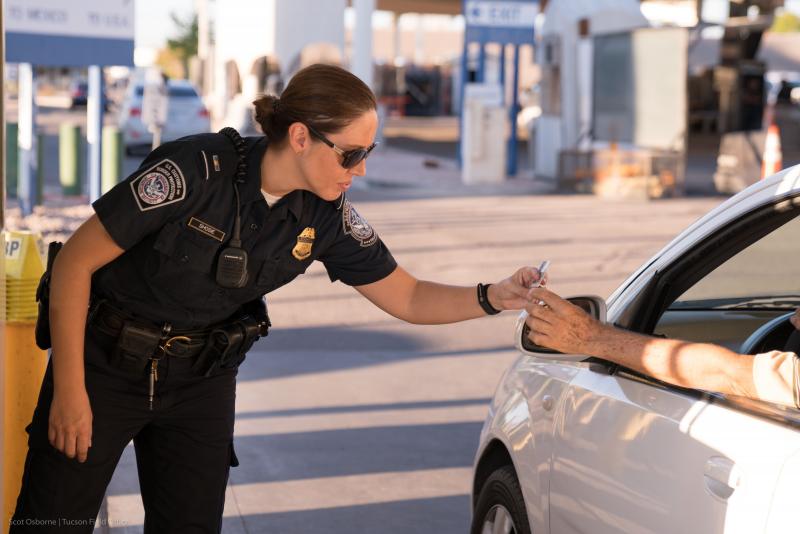Yuma, Arizona - U.S. Customs and Border Protection is reminding travelers to apply for their I-94 as soon as possible to avoid delays at the Arizona-Mexico border.
The reminder applies to travelers holding a Mexican border-crossing card, or “Laser Visa” and who are planning to make an extended visit to the United States during this holiday season.

Officers inspect documents when
individuals/families attempt to enter
the U.S. from Mexico
“We expect this week to be very busy for all the Arizona ports," said Guadalupe Ramirez Jr., U.S. Customs and Border Protection Tucson acting Director of Field Operations. "Taking this into account, we encourage travelers to get their I-94s before the weekend or online to avoid potential delays."
The I-94 website allows travelers arriving at land borders to apply for their Form I-94 online. The enhancement allows travelers to provide their biographic and travel information, and pay the $6 application fee within seven days prior to arrival.
In addition to Form I-94 being used to document the arrival and departure of non-citizens, the form serves as evidence of lawful admission, alien registration, immigration status and, for individuals approved to work, employment authorization.
Land travelers will receive a provisional I-94 upon submitting their application and payment online. Once they arrive at the Port of Entry, they will submit biometrics, if applicable, and be interviewed in-person by a CBP officer. The CBP officer will provide a paper Form I-94, I-94W or I-94A as appropriate.
Payment on the I-94 website can be made with a credit card, debit card, direct debit or through PayPal. The benefits of this process include increased efficiencies during processing, decreased paper usage, a streamlined CBP inspection process for the traveling public, and reduced operating costs.
CBP recognizes the importance of international travel to the U.S. economy. Facilitating legitimate travelers as quickly as possible, while maintaining the highest standards of security, is critical to our mission.
Automating the I-94 also allows CBP officers to spend more time with the traveler to ensure the proper entry process.
CBP also encourages travelers to obtain and utilize radio-frequency identification technology (RFID)-equipped travel documents such as U.S. passport cards and the newer versions (i.e. since 2011) of the border crossing card and resident alien card so that they can utilize Ready Lanes. Processing in Ready Lanes is 20 percent faster than general lanes and provide time savings of up to 20 seconds per vehicle. Those who have renewed their entry documents within the last 24 months already have radiofrequency identification enabled documents (RFID) and may not know it. CBP encourages travelers to obtain RFID entry documents to use Ready Lanes and enroll in trusted traveler programs.